The global employment scenario has been the most radical in 2020 and 2021. Moving forward, these global hiring trends for 2021 and 2022 will likely define the future of employment for both companies and job aspirants.
The global talent acquisition market has undergone an unprecedented shift in 2020 due to the COVID-19 pandemic. Many businesses have had to change their models almost overnight to meet the challenges of surviving in the post-pandemic market, and most importantly, the changing expectations of their employees.
The many challenges organizations faced during this pandemic include adapting to the remote work environment, incorporating the right technologies to sustain business remotely, responding to the current cultural and political environment, and focusing on employee well-being. Although the business environment has shown signs of recovery and return to stability in 2021, the pandemic has significantly shifted the job trends prevalent until the last few years.
In this blog, we inspect the latest trends that are gaining prominence now and will require organizations to adapt and change their talent acquisition strategies. From changing employee perspectives to technological and cultural factors, let’s look at the key factors shaping employment scenario in 2021 and beyond.
Changing paradigms of employee experience and work-life balance
With the prominence of work from home models, many businesses got a closer look at a day in the life of their employees and their unique personal struggles. This microscopic view of employees’ lives resulted in businesses focusing on mental and physical wellness programs, specially to cope up with the pandemic.
Employers in the present age are better understanding the importance of contributing to employee well-being. During the lockdown, balancing the demands of their jobs with the anxiety around keeping themselves and their families safe from COVID significantly affected their productivity last year. Employers have realized that simply improving the employee experience is not enough in improving overall productivity.
They now have to focus on ensuring employee physical and mental health, financial stability, workplace flexibility, and other factors that will enable employees to work efficiently both in the office and remotely.
Focus on employee mental health
Improving employee experiences and work-life balance, mental health, along with physical health, has taken precedence when it comes to employee well-being. According to a survey commissioned by Zapier, 91% of Gen Z and 85% of millennial employees said that employers should have a mental health policy in place even before the pandemic.
The focus on mental health has increased further during the pandemic as people were tackling not only the fear of infection themselves but also for their families. Many people were also dealing with the physical and financial stress of having family members being sick or losing them. Such situations led to employee stress and drop in productivity.
This resulted in over 88% of businesses investing in employee’s mental wellness programs by providing in-house and digital programs that can be accessed by employees at their convenience.
But what exactly do companies mean by providing mental health support?
- Providing professional therapist access
- Digital programs with a holistic approach focusing on physical and mental health
- Working on removing the stigma of mental health around the workplace and making it easier for an employee to ask for help
- Monitoring the results of your mental wellness program by examining employee productivity before and after therapies
Focus on mental health policies will continue to be a big factor in employee productivity in the coming years, and it’s up to companies to provide a healthy environment that keeps the psychological well-being of employees at the forefront.
ADDRESSING THE CURRENT SOCIAL AND POLITICAL DEBATES
The fastest-growing trend among millennials and the Gen Z is political and social sensitivity, and it also plays a crucial role in their job preference. Employees today want to work in a company that actively takes part in community and social development where it operates, and lends support to causes of equality and inclusion.
Employees prefer organizations that are not only being vocal about but also work on doing their bit for issues like LGBTQ employment opportunities, income disparity, and safe work culture. Creating a diverse work environment can boost organizational productivity and allow diverse perspectives to add value to problem solving, especially in the post-COVID era, as you can hire well-suited candidates for your business from all across the globe.
On that note, let’s take a look at the top 3 challenges to overcome in the year 2021 for growing businesses.
Top 3 Hiring Challenges
According to an in-depth survey conducted by Robert Half, senior managers have stated the following employment hurdles that might affect the second half of 2021 and 2022:
- Finding the candidate with the right skills (22%)
- Hiring quickly to land the right talent (17%)
- Hiring candidates who align with the company culture (16%)
Build effective hiring strategies to target the right talent
The global employment scenario has changed and continues to evolve since 2020. Moving forward, these trends will define the future of employment for both companies and job aspirants. VBeyond Corporation can help you keep up with a fast-changing business environment by helping you find the best talent to build high-growth teams.
Reach out to us today to build effective talent strategies.


